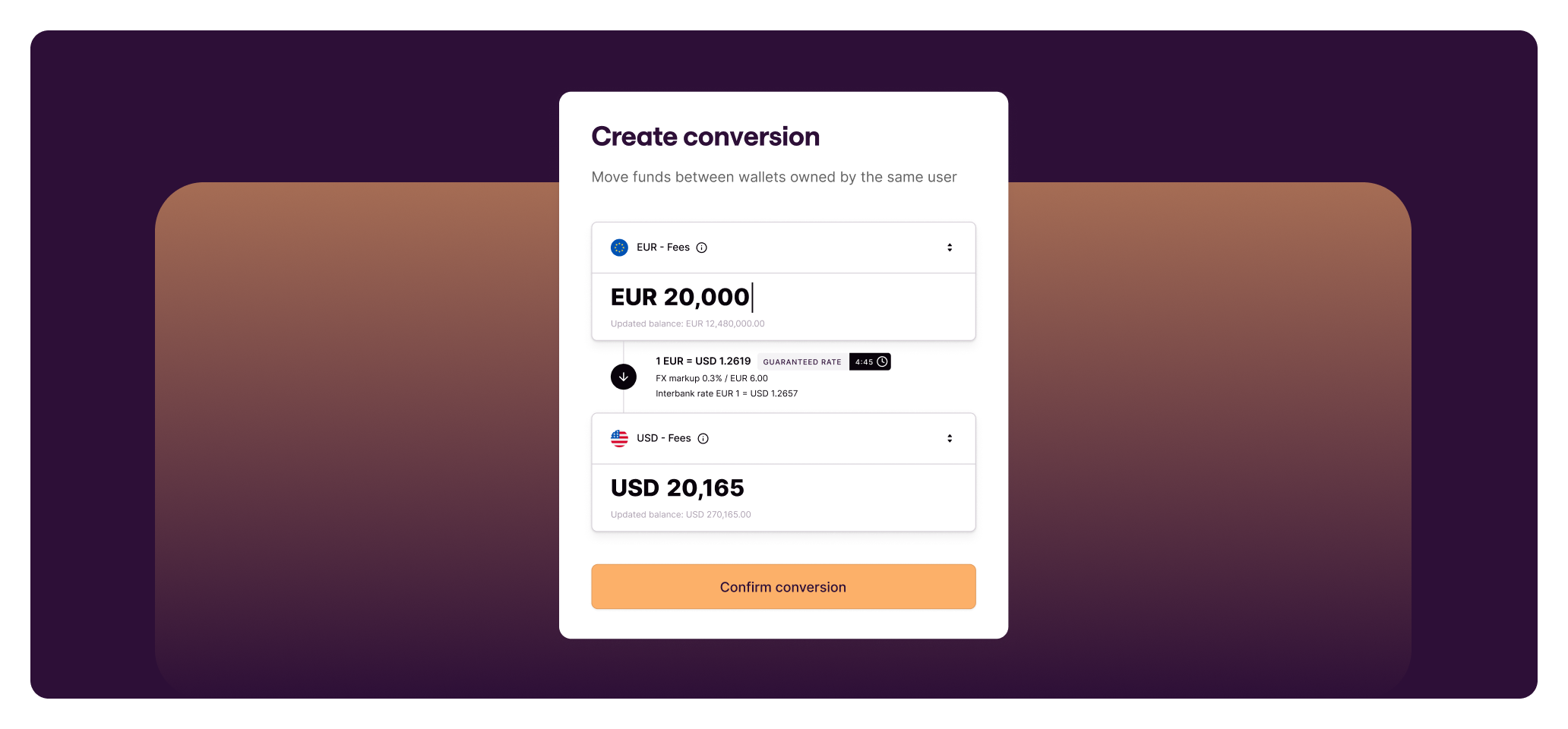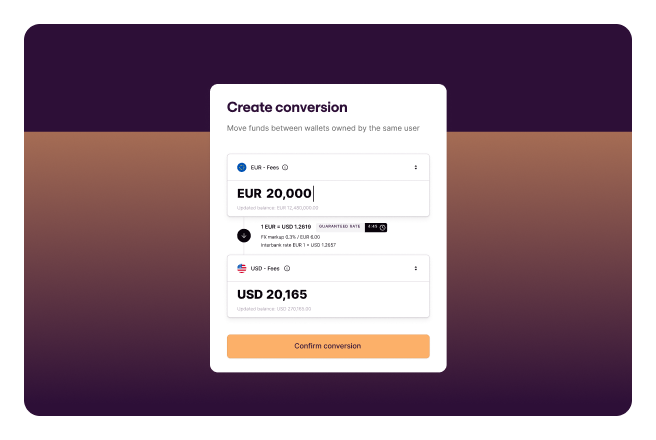Five fintech experiences you can embed in your platform.
Learn how to grow your revenue through embedded fintech experiences leveraging your existing transaction volume.


As non-fintech companies are increasingly embracing built-in financial experiences, industry experts predict a significant portion of business earnings will come from integrated financial services a
From Uber Cash to Shopify Pay, brands across various sectors are evolving into financial hubs.
In this guide, we’ll explore how businesses can quickly launch fintech experiences to unlock potential revenue gains, and cost savings with their existing transaction volumes.
User-centricity finally pays off
Fintech’s commitment to making financial services more accessible and user-friendly has fostered a user- centric digital transformation.
As a result, even non-fintech companies are strategically integrating financial services to bring a more unified experience for their users, from in-app wallets, BNPL solutions to developing their own built-in payment methods.
Today, however, integrated financial services not only serve to improve user-friendliness as they become a revenue centre. Even a simple store of value function for in-app currencies encourages users to store balances, creating a closed loop that secures millions in revenue from re-spending.
Handling funds in this volume however, stirs up regulatory headaches. When you act as a custodian of customer funds, you become subject to stricter financial regulations.
But how do non-fintech companies strike the balance between embracing a whole new way to grow while keeping compliant?
Navigating regulatory considerations for holding user funds
Handling large volumes of transactions and holding user funds require compliance with financial regulations, typically necessitating an Electronic Money Institution (EMI) or a banking license.
- Electronic Money Institution (EMI) License:
An EMI license is essential for platforms offering electronic money and financial services such as account management, payments, and digital money transfers. Obtaining this license verifies a company's commitment to secure operations and regulatory compliance, which enhances customer trust, generates new revenue streams, and improves customer experience. However, the process is lengthy, often taking over a year, not including the time and resources needed to build the necessary tech infrastructure. - Banking License:
For companies looking to offer a broader range of financial services—such as taking deposits, lending money, and handling financial transactions—a banking license is required. This license demonstrates the company's reliability and adherence to strict regulations. However, acquiring a banking license involves meeting stringent requirements, including significant capital, a comprehensive business plan, and robust corporate governance, with the process potentially taking up to 18 months.
While these licenses allow companies to hold funds or electronic money compliantly, they also bring ongoing regulatory scrutiny related to Anti-Money Laundering (AML), risk management, and customer fund safeguarding. This makes the process costly and time-consuming, requiring significant development effort to maintain compliance and build supporting infrastructure.
A challenge for one, an opportunity for another
The challenges associated with obtaining financial licenses have given rise to a new market for embedded and white-label financial solutions, such as Banking-as-a-Service (BaaS) and Wallet infrastructure solutions.
These licensed providers handle the risk and compliance burden, offering market-ready infrastructure that non-fintech companies can leverage to offer fintech experiences without the regulatory hassle.
These solutions allow non-fintech companies to quickly integrate financial services, creating new revenue streams by offering their user base a seamless fintech experience.
Financial services you can embed in your platform
For companies looking to embed financial products while maintaining control over the user experience, several low-risk, low-effort solutions are available:
- In-App/Platform Wallets
In-app wallets create a closed-loop system that keeps users engaged by allowing them to store cashback and other in-app currencies. These wallets not only increase customer lifetime value but also save platforms up to 15% on payment processing costs.
Here are solutions you can use for in-app wallets:
- Wallet Infrastructure or Wallet-as-a-Service (WaaS): Licensed wallet providers offer infrastructure that allows platforms to hold digital money in wallet accounts indefinitely. These providers enable secure management and distribution of funds, with easy integration through APIs, allowing full customization and ownership of the user experience.
- Banking-as-a-Service (BaaS):
For companies looking to embed more comprehensive banking services, BaaS solutions allow for creation of accounts, financing options, and other banking features. This solution is integrated via APIs, giving companies full control over the user experience.
While both solutions enable storage of funds, wallet infrastructure is simpler and more cost-effective, making it ideal for platforms seeking a quick and easy way to introduce a store-of-value feature. BaaS, on the other hand, is suited for those looking to offer a more extensive embedded banking solution.
- Issuing account details for sellers
Enhancing the experience for sellers, contractors, or freelancers can improve their loyalty and retention. By offering dedicated accounts, companies give sellers control over their earnings, allowing for faster payment and flexible withdrawal options. This not only increases seller satisfaction but also reduces operational costs and improves efficiency.
Seller accounts can be created using the same store-of-value features as buyer accounts, leveraging either a wallet infrastructure or a BaaS solution. - FX or currency management
Traditional currency exchange services often add hidden markups, costing businesses up to 3% in fees. Efficient currency management can prevent these hidden costs and ensure transparent pricing for users. By embedding currency conversion solutions, businesses can reduce costs, avoid FX losses, and offer competitive rates.
To get started with this feature, you can look at currency conversion or FX providers offering API-first solutions that allow companies to embed currency holding, conversion, and management features into their platforms, protecting revenue from conversion costs and providing a more flexible and transparent user experience. - White-label payments and fraud solutions
For SaaS platforms like Shopify or Wix, where merchants require ownership of their payment experiences, partnering with white-label payment providers offers a customizable payment and financial suite. This allows merchants to tailor the look, feel, and functionality to match their brand while reducing development costs and compliance burdens for the platform.
Benefits of partnering with a payment provider:
Faster Go-to-Market: Partnering with a white-label payment provider allows for quicker implementation without the need for extensive licensing or infrastructure development.
Frictionless Merchant Onboarding: White-label solutions streamline the onboarding process, enabling merchants to start selling faster without needing separate merchant accounts.
Reduced risk and compliance burden: These solutions often come with built-in fraud prevention tools, reducing the time-to-market and allowing platforms to focus on core business functions. - BNPL or instant financing solutions
The rise of BNPL options has transformed financing by integrating it directly into eCommerce checkouts. Companies can embed instant financing solutions, offering customers greater flexibility and improving conversion rates, customer acquisition, and loyalty.
Solutions you can use to embed financing solutions:- Third-Party BNPL Solutions: Companies like Klarna and HOKODO manage credit checks, loan approvals, and payment processing, allowing platforms to offer financing without developing the solution in-house.
- BaaS Solutions with Financing Capabilities: For companies looking for full control over the financing experience, BaaS solutions can be customized to offer in-house financing options, though they require more effort and resources to manage.
Conclusion:
As eCommerce continues to evolve into a financial hub, non-fintech companies have unprecedented opportunities to become fintechs by embedding financial services into their platforms.
Whether through in-app wallets, BaaS, or white-label solutions, businesses can offer a seamless, user-centric financial experience while unlocking new revenue streams and cost-saving opportunities.
By partnering with the right providers and leveraging embedded finance solutions, companies can navigate regulatory challenges, reduce development efforts, and accelerate their transformation into fintech hubs or super-apps of the future.
Ready to launch your first fintech experience? Get in touch to learn more.

